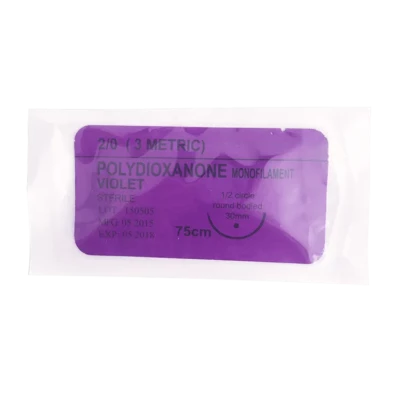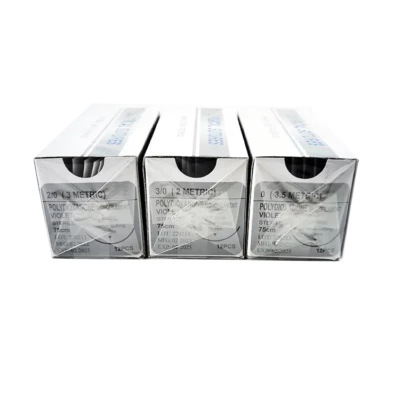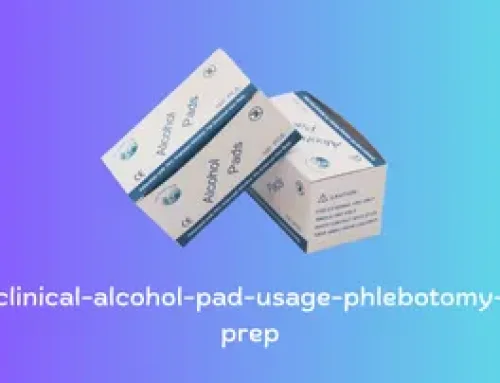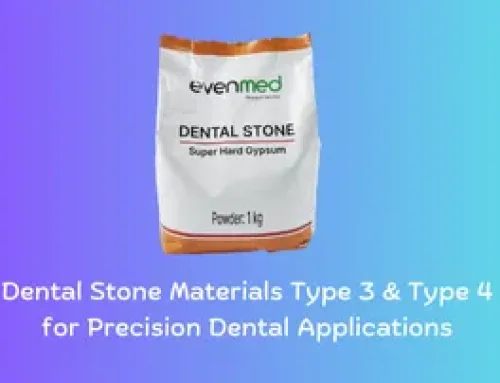In the ever-evolving landscape of medical advancements, absorbable surgical sutures have proven to be a game-changer. Among them, absorbable polydioxanone surgical sutures stand out as a remarkable innovation. These sutures offer numerous benefits, from reduced tissue trauma to efficient wound healing. In this article, we’ll delve into the different types of absorbable polydioxanone sutures and explore the various advantages they bring to the medical field.
1. Introduction
Absorbable surgical sutures have revolutionized the way we approach wound closure. Among these, absorbable polydioxanone surgical sutures, often referred to as PDO sutures, have gained significant popularity due to their unique properties and versatile applications.
2. Understanding Absorbable Polydioxanone Surgical Sutures
Absorbable polydioxanone surgical sutures are synthetic sutures made from a biocompatible polymer called polydioxanone. These sutures are designed to gradually break down and be absorbed by the body’s natural processes over a specific period, eliminating the need for suture removal. This characteristic makes them particularly advantageous in various surgical scenarios.

3. Types of Absorbable Sutures
3.1 Monofilament Sutures
Monofilament PDO sutures consist of a single strand of polydioxanone. They are known for their smooth surface, which reduces tissue damage during insertion and minimizes the risk of infection. Monofilament sutures are ideal for delicate tissues and procedures where precision is essential.
3.2 Multifilament Sutures
Multifilament PDO sutures are composed of multiple strands braided together. This design provides higher tensile strength, making them suitable for applications that require greater support and strength. They are often used in cardiovascular and orthopedic surgeries.
3.3 Barbed Sutures
Barbed PDO sutures are equipped with tiny, backward-facing barbs that grip the tissue, eliminating the need for knots. This innovative design reduces operating time and offers exceptional support. They are commonly used in cosmetic and plastic surgeries.
4. Benefits of Absorbable Polydioxanone Sutures
4.1 Reduced Tissue Reaction
Absorbable PDO sutures cause minimal tissue reaction, resulting in reduced inflammation and discomfort for patients. This is particularly advantageous in procedures where sutures remain in contact with sensitive tissues for an extended period.
4.2 Prolonged Wound Support
PDO sutures maintain their strength throughout the critical phase of wound healing, providing prolonged support. This is especially valuable in surgeries involving tension on the wound site.
4.3 Minimal Scar Formation
Due to their biocompatible nature and gradual absorption, PDO sutures contribute to minimal scar formation. This is a significant aesthetic benefit for patients.
4.4 Enhanced Healing Process
PDO sutures stimulate collagen synthesis around the wound area, promoting tissue regeneration and a more efficient healing process.
5. Applications in Various Medical Fields
5.1 General Surgery
PDO sutures are widely used in general surgeries for wound closure, offering ease of use and excellent wound support.
5.2 Obstetrics and Gynecology
In obstetrics and gynecology, PDO sutures are employed in procedures like cesarean sections and pelvic floor repairs due to their prolonged support and minimal tissue reaction.
5.3 Dermatology
Dermatological procedures benefit from PDO sutures’ ability to minimize scarring, making them suitable for skin closure in cosmetic and reconstructive surgeries.
6. Comparison with Non-Absorbable Sutures
While non-absorbable sutures have their own set of advantages, absorbable PDO sutures eliminate the need for suture removal, reducing patient discomfort and potential complications.
7. Guidelines for Proper Usage
Medical professionals must consider the specific characteristics of PDO sutures, including absorption rate and tensile strength, when selecting the appropriate suture type for each procedure.

8. Patient Considerations
8.1 Allergies
Patients with allergies to polydioxanone or similar materials must be carefully evaluated before using absorbable PDO sutures.
8.2 Absorption Rate
The absorption rate of PDO sutures can vary depending on the patient’s physiology and the suture type used, necessitating individualized treatment plans.
9. Challenges and Future Developments
While absorbable PDO sutures have proven to be highly beneficial, ongoing research aims to further improve their tensile strength, absorption rate, and overall performance.
10. Conclusion
Absorbable polydioxanone surgical sutures have revolutionized wound closure in the medical field. Their diverse applications, reduced tissue reaction, and gradual absorption make them a valuable tool for surgeons seeking optimal patient outcomes.
11. FAQs
11.1 Are absorbable polydioxanone sutures suitable for all types of surgeries?
Absorbable PDO sutures are suitable for a wide range of surgical procedures, from general surgeries to specialized fields like obstetrics and dermatology.
11.2 How long does it take for these sutures to be absorbed by the body?
The absorption time varies based on factors such as suture type and patient physiology, but it generally ranges from several weeks to a few months.
11.3 Can absorbable polydioxanone sutures cause allergic reactions?
While rare, allergic reactions can occur in patients sensitive to polydioxanone or related materials. A thorough patient evaluation is crucial before suture use.
11.4 Are these sutures cost-effective compared to traditional sutures?
While absorbable PDO sutures might have a higher upfront cost, their elimination of suture removal and associated complications often results in overall cost-effectiveness.
11.5 Where can medical professionals access absorbable polydioxanone sutures?
Medical professionals can access absorbable PDO sutures through reputable medical suppliers and distributors.




